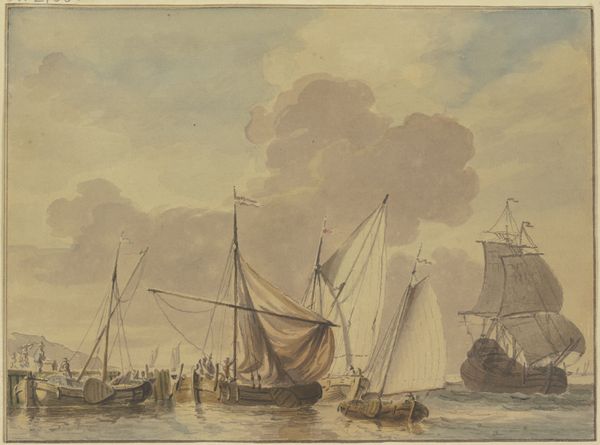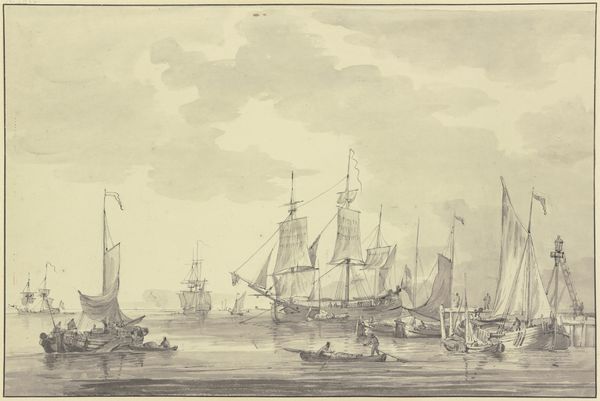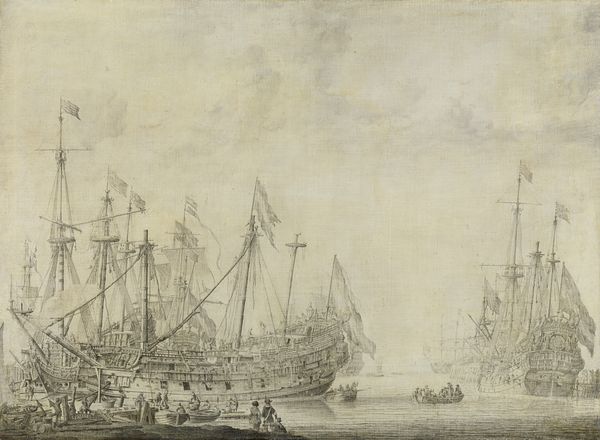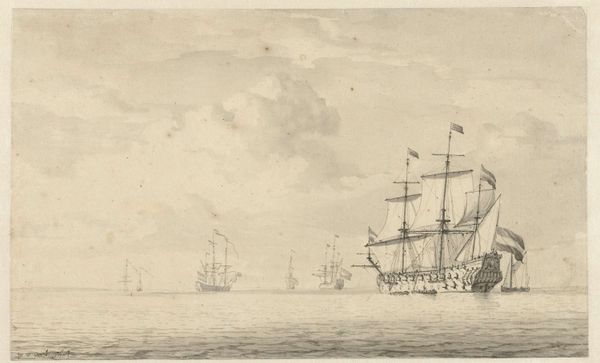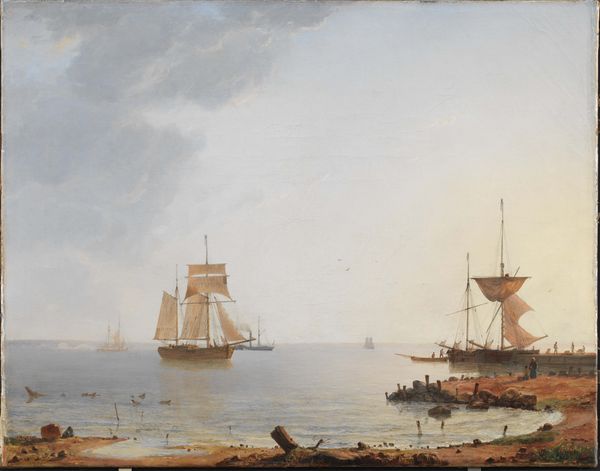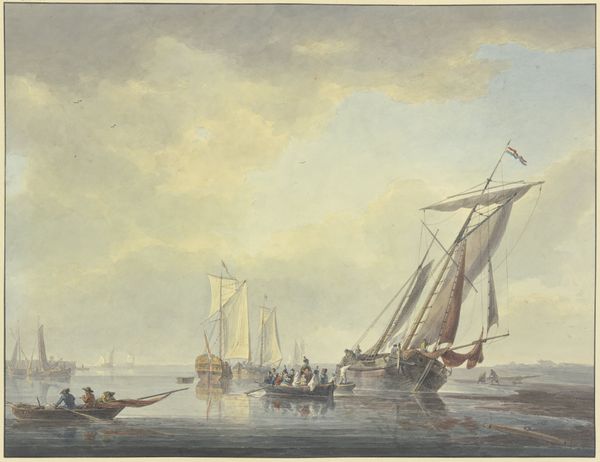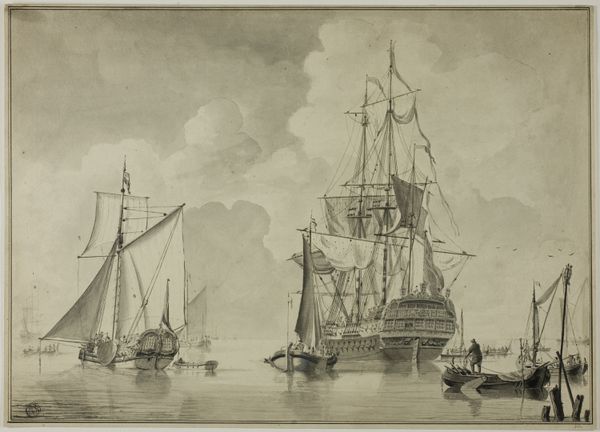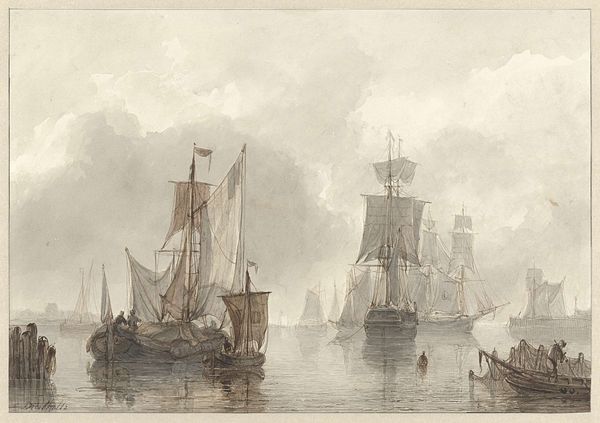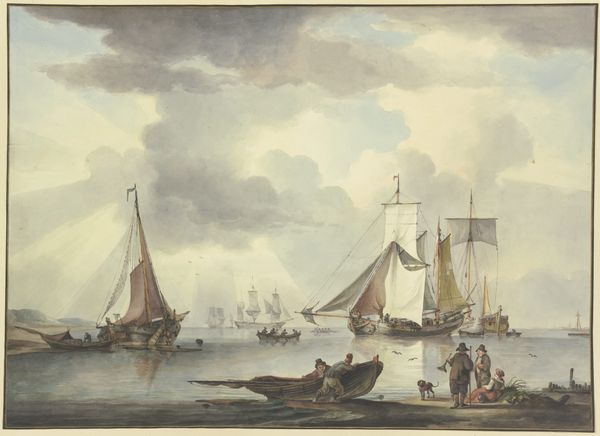
Dimensions: Sheet: 17 11/16 × 24 13/16 in. (45 × 63 cm)
Copyright: Public Domain
Curator: Here we have "A Man O'War Lying at Anchor," a work created between 1807 and 1838 by Johannes Christiaan Schotel. It combines watercolor, colored pencil, and print techniques. What strikes you first? Editor: Its gentleness, despite depicting what I understand to be a warship. The tones are soft, almost pastel, and the reflections create an ethereal, dreamlike quality. The composition, however, uses that large ship to cut through the serene vista. Curator: Indeed. Schotel’s careful use of light and shadow delineates the ship's form and emphasizes its materiality. Notice the delicate layering of washes, especially in the rendering of the water. Editor: Considering this ship undoubtedly served a martial purpose, I wonder about the intent behind portraying it with such placidity. Was Schotel downplaying its function? Is he attempting a subtle political comment given the socio-political turbulence in Europe during the 19th century? Curator: It’s possible. The Dutch Golden Age seascape tradition certainly informs the aesthetic, focusing on maritime prowess. Yet, one can argue Schotel may well want to capture its visual architecture too. The mast creates strong vertical line while the rigging forms an almost geometric web that interacts beautifully with the atmospheric sky. Editor: I can't help but think about the public’s reception of such imagery. These majestic vessels would’ve been symbols of Dutch power, influencing public perception of naval strength and, therefore, national identity. Curator: Yes, but also look at the distribution of pigment. Schotel draws attention to formal compositional components in subtle gradations of the medium that work so nicely across the picture plane. He’s also quite interested in surface tension – or its illusion - if we carefully regard how water reflects this ship, creating the mirroring of an alternative image on its glassy skin. Editor: I'm drawn to the narrative the artwork evokes: the human element surrounding this great ship, their reliance on its presence in shaping of everyday commerce and global exchange. Curator: We are both looking at very distinct interpretations—historical narratives as you describe, with compositional qualities being central for me. Editor: A worthwhile exploration, showing how Schotel gives us much to think about in a seemingly calm harbor scene.
Comments
No comments
Be the first to comment and join the conversation on the ultimate creative platform.
